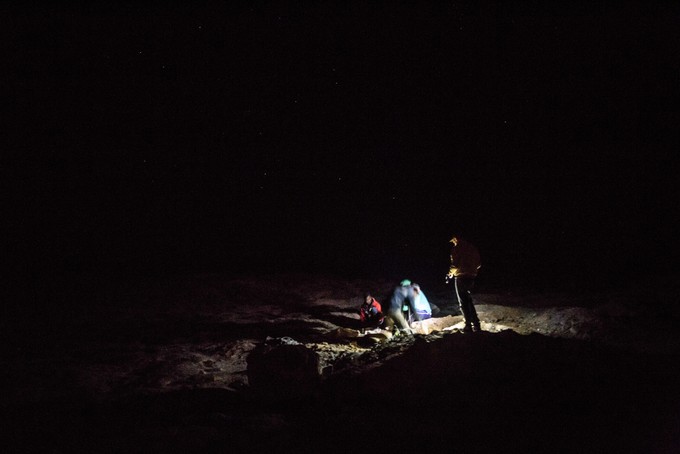Rough diamonds - part three: “If we could work legally, we wouldn’t break the law”
Department of Mineral Resources criticised for its handling of mining disaster
Trapped in the collapsed mine at Bontekoe, seven metres below ground, Sidney*, an illicit diamond digger from Hondeklipbaai, began removing small stones from beneath his torso, attempting to work himself free. Aubrey Booies, his dead companion, lay at his feet. Miners cried for help under mounds of debris, their voices muffled by sand. Others, more seriously injured by the falling rocks, merely groaned. Sidney’s headlamp was still working; he shone its beam around the chamber and saw more bodies.
“There was blood everywhere,” he told me. “Those people couldn’t be identified afterwards. Their faces were damaged. Some men were missing their arms.”
When he had opened a large enough cavity below his chest, Sidney began wriggling forwards, taking care not to disturb the rocks above him. He could move his chest but his hips were pinned under a boulder. He pulled more stones loose and reached for his legs, pulling them out one by one.
“I had to use all my force,” he said. “I was sweating. I knew those rocks might fall again, but I needed to escape.”
Unable to walk, he crawled on one leg towards the mineshaft. His right hip was dislocated and he moved slowly. “The leg had popped out the meat,” he said. His head hurt. His right shoulder hurt. When he reached the ladder, he climbed with one arm.
At the surface, lit by a crescent moon, survivors sat in shock; many of the diggers waiting to enter the mine had fled. Shortly afterwards, police and De Beers officials arrived from Kleinzee, 30 km away. By dawn, a rescue operation had begun.
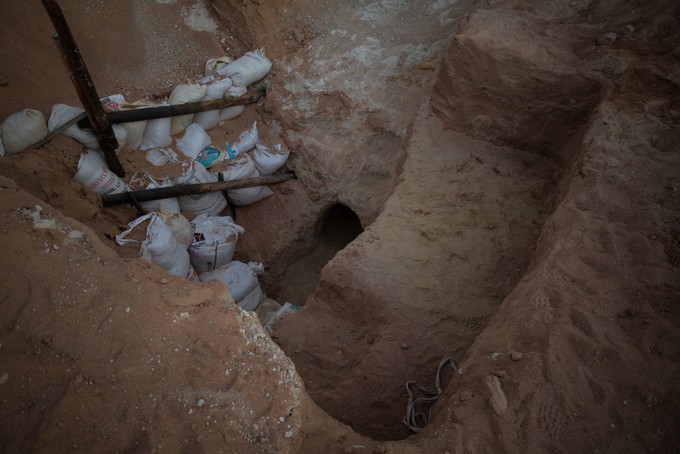
“Management expressed their shock today following an accident that trapped seven or more people in illegally excavated tunnels,” announced a De Beers press release on 22 May 2012. “We can confirm this evening that one person has been rescued and taken to hospital … The rescue team is still carefully excavating the collapsed tunnels to investigate whether more people are trapped.”
De Beers was “deeply concerned that people are illegally digging and thereby endangering themselves,” the statement continued. “The Mine is managing a situation where groups of people are knowingly entering mine property, destroying fences, ignoring signage, evading arrest, transporting mining equipment and undertaking the dangerous excavation of tunnels which have proven to be unsafe.”
Over the next few days, as media flocked to Namaqualand to cover the disaster, three private specialist rescue teams worked alongside De Beers technical staff as well as a police Disaster Recovery Unit, Department of Health Emergency Services, Department of Mineral Resources (DMR) personnel, and three survivors of the collapse, who helped rescuers map out the tunnels. No further diggers came out of the mine alive.
Authorities called off the operation on 31 May, after excavating the entire site down to the bedrock. Two jackhammers and the remains of ten men were recovered in the process. In a press release that day, Phillip Barton, CEO of De Beers Consolidated Mines, stated: “The loss of life in illegal digging is even more tragic in that it is completely avoidable. [Illicit diamond digging] is an action endangering one’s own life. It is an act damaging to one’s own family and community.” Barton added that illegal excavations were by nature “uncoordinated” and “prone to collapse.”
“The solution may rest collectively with a multiplicity of stakeholders yet the will to change ultimately belongs to individuals involved and benefitting from these illegal activities,” he said.
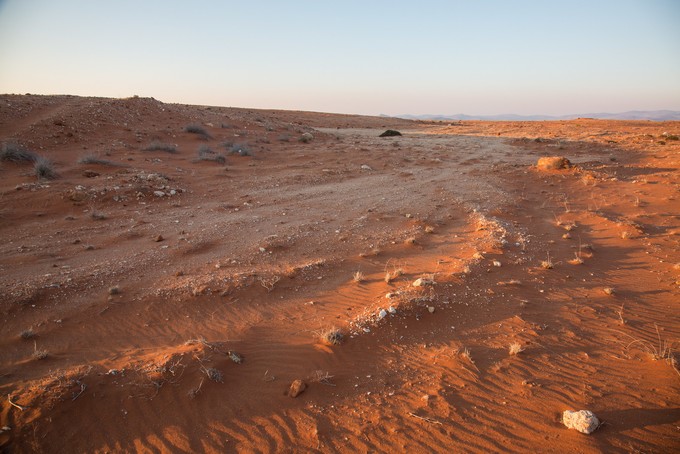
De Beers sold its Namaqualand mines to Trans Hex in October 2014, following more than three years of negotiations. The consortium West Coast Resources, in which Trans Hex is a majority shareholder, has subsequently resumed mining operations in parts of Namaqualand, but not at Strydrivier, where the Bontekoe collapse took place.
Today, the site is almost indistinguishable from the degraded mining landscape surrounding it. The gravel deposits excavated during the recovery, still containing diamonds, were removed and “secured at a safe place,” according to De Beers statements. The tunnels had already been filled in once by the time of the accident, authorities familiar with the case told me. “The diggers began working there again on the Easter Weekend of 2012,” said one official, speaking on condition of anonymity.
In Hondeklipbaai, illicit diggers told me that retrenched De Beers mineworkers had “tipped diggers off” that the site was rich in diamonds, and that a “clique” had opened the mine up a second time after it was closed by De Beers.
“Those people knew where the diamonds were,” said Sidney, who has deep scars on his back from being pinned beneath the rocks at Bontekoe. “They were well trained but had no work opportunities. You can’t blame them, or say that we’re guilty for going inside the tunnels. It’s like training a person to do something, and later on saying: Fuck him.”
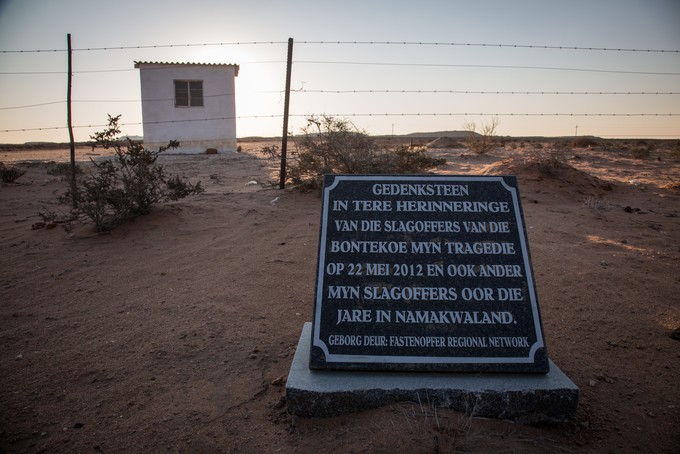
Since the rescue and recovery operation — which was largely funded by De Beers, and cost “hundreds of thousands of rands”, according to sources close to the case — police have opened an inquest docket to investigate the deaths at Strydrivier. Once completed, this docket will be sent to the Springbok Magistrate’s Court to determine whether any parties can be held responsible for the accident. The docket requires submissions from everyone involved in the rescue; it already consists of multiple lever-arch files. If, upon being submitted to the court, the inquest contains errors or elicits queries, it will be sent back to the police for further investigation. The inquest will remain off public record until a magistrate has ruled on the matter — or until the case is dropped.
In the meantime, more than four years later, there has been no formal government investigation of the incident, as required by South African law. This is according to Janet Love, a Commissioner at the South African Human Rights Commission (SAHRC), who in 2013 visited Namaqualand while conducting investigative hearings into illicit mining in South Africa.
“There has been a real failure for any responsible party to stand up since Bontekoe,” Love told me earlier this year. “Unless there’s more exposure, this disaster won’t be dealt with appropriately.”
The SAHRC hearing, published in 2015, reports that residents in Komaggas, one of the communities directly affected by the collapse, have “not found emotional closure following the mishandling of the tragedy” by the DMR, the government agency responsible for investigating mining accidents.
“The incident appears to have been re-categorised from being a mining accident to a criminal activity,” the report states. “All questions from the community … were met with the response that they should ask the Springbok SAPS, who have no mandate to conduct an enquiry.” (Emphasis added.)
“It is not acceptable for the DMR to shirk their responsibilities in terms of carrying out this enquiry simply because the incident related to ‘unlawful mining activities’ … The community cannot continue to be fobbed off … Whether legal or not, a mining accident requires a report into the mining related issues.”
The DMR did not respond to written questions by time of publication.
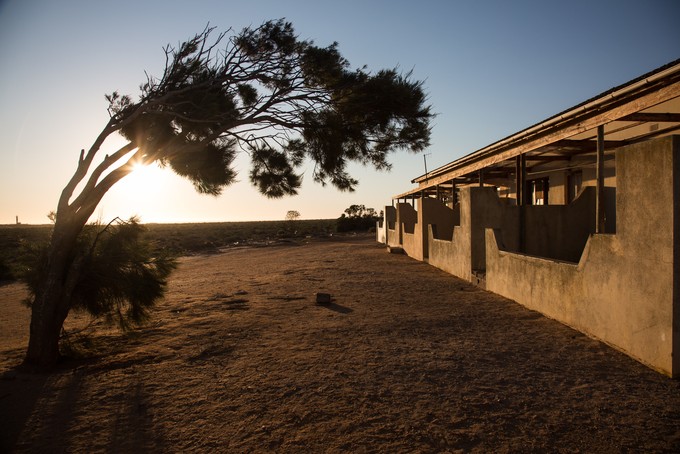
In Hondeklipbaai, Sidney now works as a casual labourer for a local guest resort, cleaning cottages and tending the garden. His employer pays him R100 per day. “It isn’t good money, but if you don’t have a job, or food on your table, you must take it,” Sidney told me when I visited him at work.
After the mine collapse, Sidney spent nearly a month in hospital; his right hip still hurts when he walks. Some nights, he dreams of bloodied faces and contorted limbs. The images return during the day, while he is folding linen or sweeping ash from outdoor fireplaces. He drinks heavily whenever he can afford to — ”I want to stop,” he said, “but it helps me forget these painful things.”
Although Sidney has not gone digging in more than two years, many others from Hondeklipbaai have continued, including the two other local men who escaped from Bontekoe alive.
“I often think of starting again. I think I will go soon, because I need the money,” Sidney said. “People aren’t going to stop doing this until there is a better opportunity. If we could get permits, or work legally, nobody would need to break the law. Nobody would have died.”
Next: Refugees have an equal right to schooling
Previous: Rubbish piles up in PE
© 2016 GroundUp. All rights reserved. (Note this article is not published under the Creative Commons license that we usually use.)

